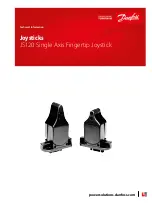
15
LT1425
APPLICATIO
N
S I
N
FOR
M
ATIO
N
W
U
U
U
minimum switch ON time, irrespective of current trip
point. If the duty cycle exhibited by this minimum ON time
is greater than the ratio of secondary winding voltage
(referred-to-primary) divided by input voltage, then peak
current will not be controlled at the nominal value, and will
cycle-by-cycle ratchet up to some higher level. Expressed
mathematically, the requirement to maintain short-circuit
control is:
V
F
+ (I
SC
)(R
SEC
)
(V
IN
)(N
SP
)
)
)
(t
ON
)(f) <
where,
t
ON
= Output switch minimum ON time
f = Switching frequency
I
SC
= Short-circuit output current
V
F
= Output diode forward voltage at I
SC
R
SEC
= Resistance of transformer secondary
V
IN
= Input voltage
N
SP
= Secondary-to-primary turns ratio
(N
SEC
/N
PRI
)
Trouble will typically only be encountered in applications
with a relatively high product of input voltage times
secondary-to-primary turns ratio. Additionally, several
real world effects such as transformer leakage inductance,
AC winding losses and output switch voltage drop com-
bine to make this simple theoretical calculation a conser-
vative estimate. In cases where short-circuit protection is
mandatory and this theoretical calculation indicates cause
for concern, the prototype should be observed directly as
follows: short the output while observing the V
SW
signal
with an oscilloscope. The measured output switch ON
time can then be compared against the specifications for
minimum t
ON
.
THERMAL CONSIDERATIONS
Care should be taken to ensure that the worst-case input
voltage and load current conditions do not cause exces-
sive die temperatures. The narrow 16-pin package is rated
at 75
°
C/W.
1
2
))
f(V
OUT
)
L
SEC
)
)
I
OUT(MIN)
=
where,
f = Switching frequency (nominally 285kHz)
L
SEC
= Transformer secondary side inductance
V
OUT
= Output voltage
t
ED
= Enable delay time
t
EN
= Minimum enable time
(t
ED
+ t
EN
)
2
Note that generally, depending on the particulars of input
and output voltages and transformer inductance, one of
the above constraints will prove more restrictive. In other
words, the minimum load current in a particular applica-
tion will be either “output switch minimum ON time”
constrained, or “minimum flyback pulse time” constrained.
(A final note—L
PRI
and L
SEC
refer to transformer induc-
tance as seen from the primary or secondary side respec-
tively. This general treatment allows these expressions to
be used when the transformer turns ratio is nonunity.)
MAXIMUM LOAD/SHORT-CIRCUIT CONSIDERATIONS
The LT1425 is a current mode controller. It uses the V
C
node voltage as an input to a current comparator which
turns off the output switch on a cycle-by-cycle basis as
this peak current is reached. The internal clamp on the V
C
node, nominally 1.9V, then acts as an output switch peak
current limit. This action becomes the switch current limit
specification. The maximum available output power is
then determined by the switch current limit, which is
somewhat duty cycle dependent due to internal slope
compensation action.
Short-circuit conditions are handled by the same mecha-
nism. The output switch turns on, peak current is quickly
reached and the switch is turned off. Because the output
switch is only on for a small fraction of the available period,
internal power dissipation is controlled. (The LT1425
contains an internal overtemperature shutdown circuit,
that disables switch action, just in case.)
While the majority of users will not experience a problem,
there is however, a possibility of loss of current limit under
certain conditions. Remember that the LT1425 exhibits a






































